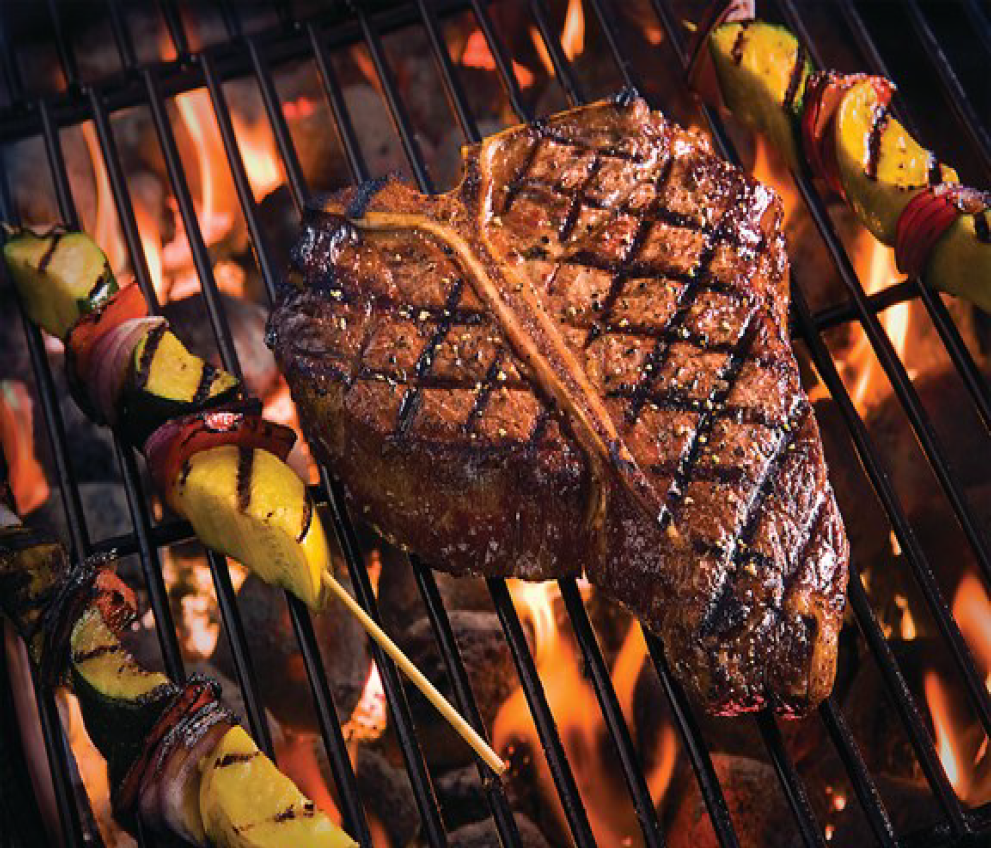4.4: The Cooking Techniques - Grilling
- Page ID
- 21845
Basic Grilling Techniques
There are multiple grilling techniques and methods. The types of heat sources for grilling are numerous. Factor in the different types of food like steaks, poultry, fish, seafood and vegetables and you can quickly see that the ways and methods of grilling are going to be many and diverse.
The key is to CUSTOMIZE your grilling techniques and your use of equipment to suit the food type to obtain the result you desire. To get the best results from a particular method or technique, these factors have to enter into play.
The main factors are food type, heat source and desired result. The last factor has to do with personal preference or weather. For example, will you be grilling indoors or outdoors?
Grilling Methods
Direct heat grilling is the most basic and common grilling method. The words speak for this method. Food items are placed over direct heat in order to cook them. This can be done over a charcoal, gas, wood or any other heat source.
The heat is usually high and ideal for SEARING. Searing involves using high heat to 'burn' both sides of your food item for a few minutes to seal flavors. The thicker your meat the longer you can sear.
After searing, the food item can then be transferred to the 'not-so-hot' part of the grill to cook.
Hamburgers, steaks, chops, sausages even kabobs do well with direct heat. These foods usually take 30 minutes or less to be fully cooked.
Indirect grilling is a method where the food is cooked with reflected or indirect heat. It involves not placing the food over a direct heat source and keeping the lid covered most of the time.
If the food must be placed over the heat source then the temperature will have to be low for the food to cook 'indirectly'. It is like roasting in an oven. Large pieces that take a while to cook like whole turkeys, leg of lamb and many roasts can be cooked in this way.
Sometimes food items are grilled over direct heat first, to seal flavors, and then they are cooked with indirect heat.
Diamond Grill Marks
- Preheat grill until very hot (about 500 – 550°F).
- Season steaks with salt and pepper, or as desired.
- Place steaks on preheated grill with the ends at 10 and 4 o’clock.
- When meat has seared and juices begin to rise to the top, turn steaks clockwise, with the ends at 2 and 8 o’clock.
- After a minute or two, flip steaks over and cook until they reach desired degree of doneness. Use a meat thermometer if necessary.
- Remove steaks from grill onto clean plate and allow them to rest approximately 5 minutes to redistribute the juices.

Steak with proper cross - hatch marks. gorare.com


